
Background information
Lenses without autofocus: what can you use them for?
by David Lee

Instead of taking hundreds of photos with a digital camera, I opted for film on my latest trip. The result is photos that are technically outdated but emotionally valuable.
As a child, I inherited an SLR camera – and a love of photography – from my grandfather. A basic course in the attic room at the local photo retailer taught me what an aperture is and how fast a shutter speed should be. The course is still available (website in German). But film has long since given way to digital sensors. Manual focusing and exposure is no longer required – computer chips take care of all that. Taking a technically correct photo is a given these days.
More than 25 years after my basic photography course, I’m turning back time. I’m on a propeller plane over Costa Rica with a film camera in my hand. While I’m looking for the framing in the viewfinder, I hold my right thumb over the shutter. With my left hand, I turn the focus ring of the lens. Then: «Clack!» The shot’s in the can.
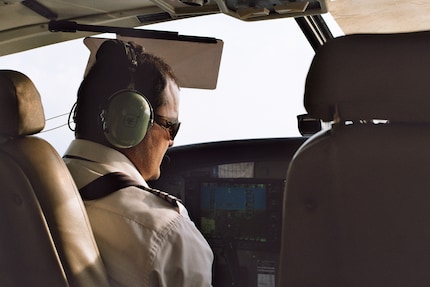
I only took a Canon AE-1 Program with me on holiday for our Focus Week, leaving my Sony A1 at home. The experiment involves risks: what if I don’t expose the photos correctly? I’d only notice at home when I got them developed. What if I want to take more photos? I only have four rolls of film with me for two weeks – that’s just 96 shots. What if I need a telephoto or wide-angle lens? There’s a 50 mm fixed focal length lens on the Canon. And anyway, is the photo quality good enough for me? After all, I’m used to the latest and best luxury cameras.
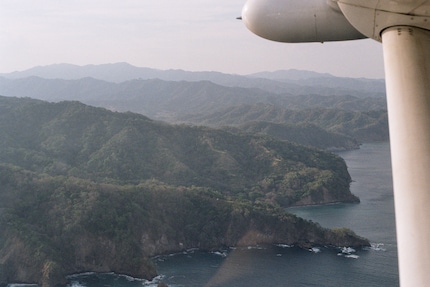
The Canon AE-1 Program was released in 1981 and was one of the best-selling cameras of its time. It cost almost 200 francs. You still have to spend about the same amount today if you want to buy one in good condition. You should make sure that the light seals are intact. If not, you can replace them yourself. The AE-1 Program is available in black or silver, with a case made of a combination of metal and plastic. The camera is much easier to handle than today’s full-frame models.
The AE-1 Program was one of the first cameras to have an automatic mode – simply called «Program». If I set both shutter speed and aperture to «A», the light meter and microchip completely take over the exposure. Alternatively, I can choose the aperture, shutter speed or both manually. Automatic and semi-automatic modes are taken for granted today – back then, they were a revolution. Other than that, I’m on my own. There’s no auto focus. I also have to transport the film manually.
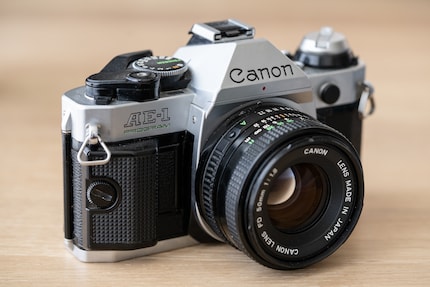
I opt for the kit lens that the camera was sold with: the Canon FD 50 mm 1:1.8. It’s so small and light that I can hang the camera around my neck without the lens tipping it forwards. The relatively large aperture offers room to play with the depth of field. It’s also useful when I want to take photos in the evening or need a fast shutter speed. «Fast» in this case means a maximum of 1/1,000 second. That’s as good as it gets with the Canon AE-1 Program.
Kodak Gold 200 is my film of choice. It’s called «Gold» because of its warm tones. On a digital camera, the white balance would roughly correspond to the «cloudy» setting. The number 200 denotes the sensitivity of the film. It’s low enough for me to be able to take photos in the sun – and high enough that the shutter speed doesn’t become too slow, even on cloudy skies or in the jungle. As soon as daylight fades, however, there’s not much that can be done.
I have no idea how to even put the film in the camera. I need instructions. Luckily, there are plenty of YouTube channels on film photography these days.
As soon as I take the first photos on the plane, I realise that film photography is a completely different experience than what I’m used to. With a digital camera, I’d point and snap the first shot fairly quickly. I’d then check the shot and improve it if needed. You can’t do that with a film camera. In addition, it costs more than a franc just to press the shutter button if you add up the cost of film and processing – and you only get a limited number of shots.
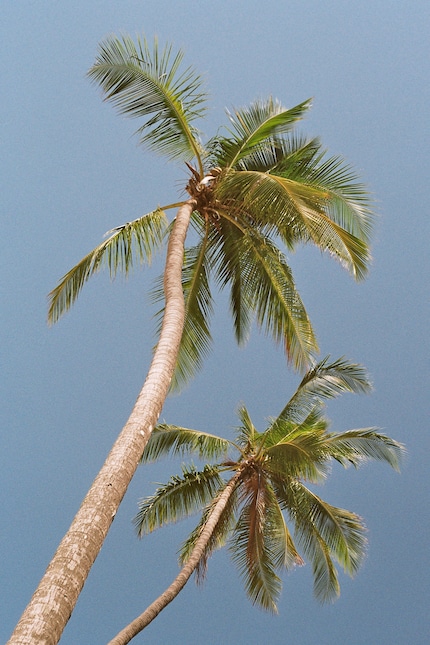
The higher stakes force me to be more careful. Even before I take a photo, I think about whether it’s worth taking. If so, the focal length is set with the fixed lens. But if I’m not happy with the composition, I spend much more time looking for a better shooting position than when I’m using a smartphone, for example. I’m happy to take a quick if mediocre photo when taking holiday photos on a phone – the main thing is that the memory is in the can.
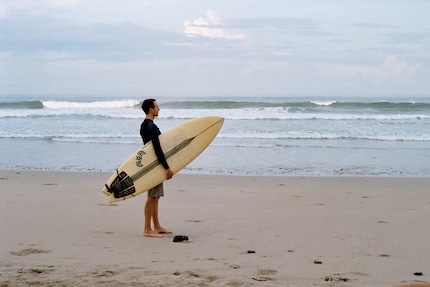
With the Canon AE-1 Program, in contrast, I take my time. Partly because I have to, but also because I want to. Because I’m actually having more fun taking photos than I have in a long time. I can’t explain why at first. I could undoubtedly take technically better photos with a newer camera. I’d also be faster and have more options. For example, when a family of monkeys is frolicking outside the window, I wish I had a longer lens and autofocus.
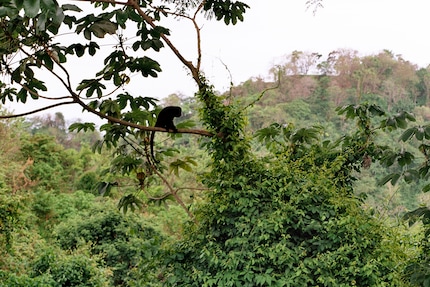
But that’s not the point. After all, I’m not taking photos professionally for someone else; I’m just doing it for myself. That makes the process even more important than the result. The bigger challenge means greater satisfaction if I get it right. The uncertainty when I’m taking a photo goes hand in hand with excitement and anticipation. And then there’s the camera itself. My modern Sony is impressive, but it feels like a soulless computer. The mechanical, creaking, clicking Canon, on the other hand, has 30 years of history, which triggers my nostalgia.
When I get home, I take my films to be developed. This can be done in various specialist shops. At Foto Huus Oerlike (website in German), for example, digital photos from a roll of normal 35 mm film cost 15 francs. To my relief, the exposure’s right on all of my photos. Most of them are also sharp, but I probably need a little more practice with the aperture wide open.
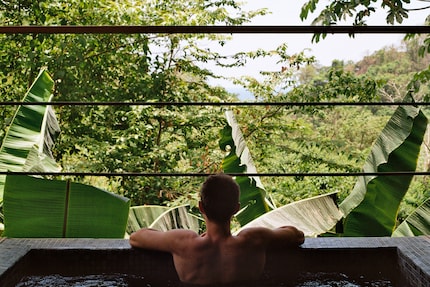
For the first time, I’m satisfied with the results. In fact, they’re my favourite holiday photos for a long time. Technically, they can’t compete in any way with photos taken on my modern Sony. Dynamic range? Small. Image noise? High. Resolution? Low. But none of that matters to me. Their imperfections are exactly what give the photos a unique, consistent look. The colours of the Kodak film and the constant focal length also contribute to this. I’m sure it’s the nostalgic in me, but as a series it looks like a journey to a bygone era.
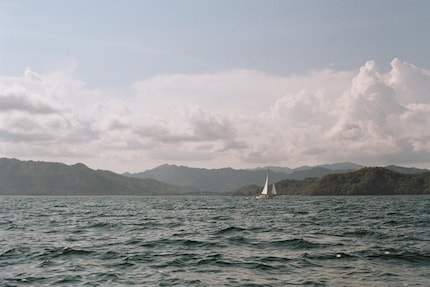
Could I have done all this digitally? Sure. There are loads of film filters out there. But, somehow, it’s not the same. I’d probably have come home with 1,000 pictures, and would now have to look through, sort and edit them. Over half would be duplicates or bad compositions. With my four Kodak films, I’ve largely been spared this effort. In the end, I have fewer, but more considered shots. I order physical 13 × 18 cm prints for 1.50 francs each and hang them up.
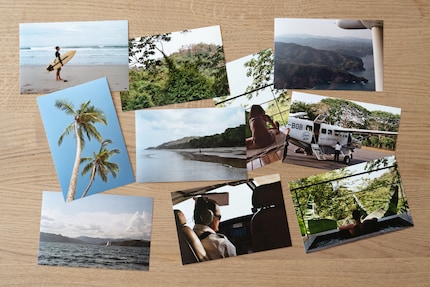
Ironically, I feel like these few physical photos preserve my memories better and for longer than the deluge of digital photos I have from other holidays. Taking photos also felt fun – not like work as it sometimes does. If I need a photo in everyday life, I’m not fussed. The main thing is that the camera isn’t in the way and delivers good results. A digital version can do it a lot better. But I measure holiday photos by their emotional value, which is also determined by the experience of taking the photos. So, from now on, the Canon AE-1 Program will be coming on holiday with me.
My fingerprint often changes so drastically that my MacBook doesn't recognise it anymore. The reason? If I'm not clinging to a monitor or camera, I'm probably clinging to a rockface by the tips of my fingers.
Interesting facts about products, behind-the-scenes looks at manufacturers and deep-dives on interesting people.
Show all